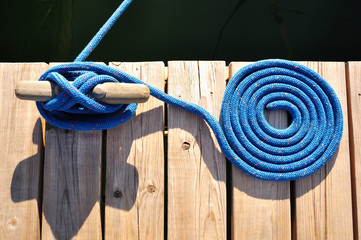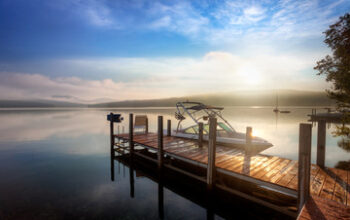If you are planning on adding a dock to your home, there are some things you should know before you begin. First, it is important to have a permit for marine projects. Failure to obtain a permit could result in fines and even the removal of the structure. It is also important to use a qualified dock-building company. They should be insured and carry the proper paperwork. In addition, they should have all the proper insurance to protect them from liability if something should go wrong.
 A professional dock-building company should know the local climate and waterway properly. Depending on your type of dock, the price can run into thousands of dollars. For this reason, you should make sure you have a budget before you begin your project. Also, remember to account for the time it takes to get the dock to the proper shape. Alternatively, you can hire a professional at https://dockbuildingcharleston.com/ to do the job for you.
A professional dock-building company should know the local climate and waterway properly. Depending on your type of dock, the price can run into thousands of dollars. For this reason, you should make sure you have a budget before you begin your project. Also, remember to account for the time it takes to get the dock to the proper shape. Alternatively, you can hire a professional at https://dockbuildingcharleston.com/ to do the job for you.
It is important to determine what the depth of your lake is before you start building your dock. Most lakes are periodically drawn down and refilled, so the depth will also vary. In these cases, you may need a dock that moves with the depth of the water. You may not have other options if you have a lake with different depths. It would be best if you also were sure to check with your homeowner’s association about any rules regarding dock construction.
Another important thing to remember when building a dock is to consider the climate in your area. If you live in a cold climate, you’ll need to develop a strategy for keeping the dock alive during cold weather. Consider a bubble or a removal method to prevent the dock from freezing. This will ultimately depend on the materials used to build your dock. The following tips will help you build a dock that will serve your needs.
A dock is a structure in the water that can be used to berth a ship or bring it closer to shore. A small dock is made of wooden planks that can be used to tie up a boat. A larger dock, usually located in a harbor, may have gates enclosing an area of water, making it more convenient for ships to repair and unload their cargo. Docks may also be used as a means of access to a port.
There are several different types of materials you can use to build your own dock. Wooden docks are the most common, but some cities and towns do not allow wood docks because of the risk of contaminating the water. Cedar boards are best for a wooden dock, but pressure-treated lumber is an option for lakes. Another choice is composite decking. Composite decking is made of wood fibers and plastic, and doesn’t require finishing. It is also very durable.
Unlike other types of docks, crib docks require more permanent structures. These are generally more expensive and require a larger investment. These structures are similar to crates, with large treated timbers placed at regular intervals in the lake. Rocks are then filled between the timbers and act as permanent anchors for the upper structure of the dock. Despite their cost, crib docks do require constant maintenance and repair. So, you might want to consider building your dock yourself rather than hiring someone to build it for you.
Another important factor is the location of your dock. For instance, if you want to build your dock on a river, a floating dock is not an option. In that case, you will need a permanent dock. However, a floating dock is only practical for small bodies of water and will likely cost around $1,500. Choosing the location of your dock is important because the location and depth of the water will determine the type of materials you need to use.
There are several types of docks. Each has its own advantages and disadvantages. When you first think of docks, you likely imagine piling docks. Piling docks are built by driving heavy wooden beams into the lake’s bottom. These are often attached to a wooden walkway. However, a floating dock can move with the tides. A floating dock is a better option if you live in an area with frequent storms and unstable waters.

